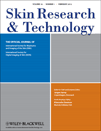Novel anti-wrinkle effect of cosmeceutical product with new retinyl retinoate microsphere using biodegradable polymer
Abstract
Background: The novel hybrid retinoid, retinyl retinoate, is a synthetic material that was designed to reduce the side effects of retinoic acid and to increase the stability of retinol. The formulation of the retinyl retinoate, however, is required to enhance skin permeation, and thus to increase the anti-wrinkle effect.
Aim: To identify the efficacy of retinyl retinoate microsphere using biodegradable polymer as an anti-aging agent of cosmetics in treating females over 30 years old with periorbital wrinkles.
Methods: The retinyl retinoate microsphere was prepared using the biodegradable polymer; polylactic acid (PLA). We also conducted two clinical studies with a total of 44 Korean women for 12 weeks. In the first clinical study, 20 patients completed a 12-week trial of cream A [3% PLA-retinyl retinoate (2%) microsphere] applied twice daily to the face. In the second clinical study, 24 patients completed a 12-week trial of cream B (0.06% retinyl retinoate) applied twice daily to the face. Efficacy was based on a global photodamage score, photographs, and image analysis using replicas and Visiometers every 4 weeks.
Results: The PLA-retinyl retinoate microsphere was more effective for the permeation of retinyl retinoate than retinyl retinoate in itself. The cream A, which contains 3% PLA-retinyl retinoate (2%) microsphere, showed a statistically significant improvement in facial wrinkles (P<0.05) in 20 volunteers after only 4 weeks of application in a clinical trial test. The visual wrinkle improvement and the maximum roughness improvement rate (R2) for cream A was 6.05%, 8.03% higher than that of cream B which contains 0.06% retinyl retinoate, after 4 weeks.
Conclusion: Retinyl retinoate has a potent anti-wrinkle activity, and the PLA-retinyl retinoate microsphere could be a useful cosmeceutical product for anti-aging purposes.




